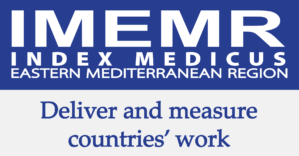Evaluation of serum Cystatin C as a predictor of eGFR in type 2 diabetic patients with nephropathy
DOI:
https://doi.org/10.53685/jshmdc.v6i1.294Keywords:
Cystatin C, Glomerular Filtration Rate, Diabetic Nephropathy, Type 2 DiabetesAbstract
Background: Diabetic nephropathy (DN) is the leading cause of chronic kidney disease (CKD) worldwide.
Objective: To evaluate serum Cystatin C as a predictor of eGFR in type 2 diabetic patients with nephropathy.
Methods: A cross-sectional analytical study was conducted at the Department of Nephrology, Liaquat University of Medical & Health Sciences, Jamshoro, Pakistan, from 10th March to 9th September 2023. Patients with type 2 diabetes (T2D) for more than five years, both males and females, 30 to 65 years of age, and with nephropathy for the last 2 years were included in the study. Serum creatinine, serum Cystatin C (Cys-C), fasting blood sugar (FBS), glycated hemoglobin A1c (HbA1c), total protein, and albumin were measured. A spot urine sample was collected to analyze total urinary protein, albumin, and creatinine levels. The estimated glomerular filtration rate (eGFR) was calculated using the CKD Epidemiology Collaboration (CKD-EPI) equation. One-way ANOVA, Pearson correlation test, and Linear regression analysis were done to analyze the data.
Results: A total of 113 patients were analyzed, with a mean age of 55.5±6.1 years. The mean duration of T2D was 12.0±5.3 years. The mean HbA1c level was 9.1±1.3%. Based on Cys-C levels, the mean eGFR was 71.33±24.8 mL/min/1.73m². Among the participants, 43(38.1%), were suffering from Stage II, 32(28.3%) from Stage I, 32(28.3%) from Stage III, and 6(5.3%) from Stage IV CKD. A majority of 50(44.2%) of study participants had microalbuminuria. A statistically significant (p<0.001) negative correlation between eGFR and Cys-C level was observed among the study participants. Serum Cystatin C is a significant (<0.05) predictor of eGFR.
Conclusion: Serum Cystatin C was a significant predictor of eGFR in type 2 diabetic patients with nephropathy. The strong negative relationship between Cystatin C and eGFR supports its potential role as a valuable marker for assessing renal function in diabetic patients.
References
Wang G, Ouyang J, Li S, Wang H, Lian B, Liu Z, et al. The analysis of risk factors for diabetic nephropathy progression and the construction of a prognostic database for chronic kidney diseases. J Transl Med. 2019; 17(1): 264. DOI: https://doi.org/10.1186/s12967-019-2016-y
WHO. Diabetes: World Health Organization; 2020. https://www.who.int/news-room/fact-sheets/detail/diabetes. Accessed 05 June 2024.
Trikkalinou A, Papazafiropoulou AK, Melidonis A. Type 2 diabetes and quality of life. World J Diabetes. 2017; 8(4): 120-129. DOI: https://doi.org/10.4239/wjd.v8.i4.120
Harding JL, Pavkov ME, Magliano DJ, Shaw JE, Gregg EW. Global trends in diabetes complications: A review of current evidence. Diabetologia. 2019; 62(1): 3-16. DOI: https://doi.org/10.1007/s00125-018-4711-2
Zhang XX, Kong J, Yun K. Prevalence of diabetic nephropathy among patients with type 2 diabetes mellitus in China: a meta-analysis of observational studies. J Diabetes Res. 2020; 2020: 2315607. DOI: https://doi.org/10.1155/2020/2315607
Garlo KG, White WB, Bakris GL, Zannad F, Wilson CA, Kupfer S, et al. kidney biomarkers and decline in egfr in patients with type 2 diabetes. Clin J Am Soc Nephrol. 2018; 13(3): 398-405. DOI: https://doi.org/10.2215/CJN.05280517
Al-Hazmi SF, Gad HGM, Alamoudi AA, Eldakhakhny BM, Binmahfooz SK, Alhozali AM. Evaluation of early biomarkers of renal dysfunction in diabetic patients. Saudi Med J. 2020; 41(7): 690-697. DOI: https://doi.org/10.15537/smj.2020.7.25168
Singh D, Patel N, Malapati BR, Shaker IA. A study of serum Cystatin C as a marker of diabetic nephropathy among patients with type 2 diabetes mellitus: a systematic review and meta-analysis. J Med Sci Res. 2022; 10(4): 237-242. DOI: https://doi.org/10.17727/JMSR.2022/10-44
Kryvoviaz YO, Shevchuk NА, Bandurka NM, Dzevulska ІV, Shevchuk YG. Features of lipid, carbohydrate metabolism and renal function in patients with type 1 diabetes and different levels of albumin in the urine depending on the level of Cystatin C. Reports Vinnytsia National Med Uni. 2021; 25(1): 50-56. DOI: https://doi.org/10.31393/reports-vnmedical-2021-25(1)-09
Kushner P, Khunti K, Cebrián A, Deed G. Early identification and management of chronic kidney disease: A narrative review of the crucial role of primary care practitioners. Adv Ther. 2024; 41(10): 3757-3770. DOI: https://doi.org/10.1007/s12325-024-02957-z
Azeem S, Khan U, Liaquat A. The increasing rate of diabetes in Pakistan: A silent killer. Ann Med Surg (Lond). 2022; 79: 103901. DOI: https://doi.org/10.1016/j.amsu.2022.103901
Williams R, Karuranga S, Malanda B, Saeedi P, Basit A, Besançon S, et al. Global and regional estimates and projections of diabetes-related health expenditure: results from the International Diabetes Federation Diabetes Atlas, 9th edition. Diabetes Res Clin Pract. 2020; 162: 108072. DOI: https://doi.org/10.1016/j.diabres.2020.108072
VankwaniR, Kumar M, Mal P, Gurbukshani S. Association between microvascular complications and chronic kidney disease stages in type 2 diabetic patients. J Shalamar Med Dent Coll. 2024; 5(2): 71-76. DOI: https://doi.org/10.53685/jshmdc.v5i2.278
Sapkota S, Khatiwada S, Shrestha S, Baral N, Maskey R, Majhi S, Chandra L, Lamsal M. Diagnostic accuracy of serum Cystatin C for early recognition of nephropathy in type 2 diabetes mellitus. Int J Nephrol. 2021; 2021: 8884126. DOI: https://doi.org/10.1155/2021/8884126
Asghar S, Asghar S, Mahmood T, Bukhari SMH, Mumtaz MH, Rasheed A. Microalbuminuria as the tip of iceberg in type 2 diabetes mellitus: prevalence, risk factors, and associated diabetic complications. Cureus. 2023; 15(8): e43190. DOI: https://doi.org/10.7759/cureus.43190
Barr EL, Maple-Brown LJ, Barzi F, Hughes JT, Jerums G, Ekinci EI, et al. Comparison of creatinine and Cystatin C based eGFR in the estimation of glomerular filtration rate in Indigenous Australians: the eGFR Study. Clin Biochem. 2017;50(6):301-308. DOI: https://doi.org/10.1016/j.clinbiochem.2016.11.024
Al-Rubeaan K, Siddiqui K, Al-Ghonaim MA, Youssef AM, Al-Sharqawi AH, AlNaqeb D. Assessment of the diagnostic value of different biomarkers in relation to various stages of diabetic nephropathy in type 2 diabetic patients. Sci Rep. 2017; 7(1): 2684. DOI: https://doi.org/10.1038/s41598-017-02421-9
Potok OA, Ix JH, Shlipak MG, Katz R, Hawfield AT, Rocco MV, et al. The difference between Cystatin C- and creatinine-based estimated GFR and associations with frailty and adverse outcomes: A cohort analysis of the systolic blood pressure intervention trial (SPRINT). Am J Kidney Dis. 2020; 76(6): 765-774. DOI: https://doi.org/10.1053/j.ajkd.2020.05.017
Stevens LA, Coresh J, Schmid CH, Feldman HI, Froissart M, Kusek J, et al. Estimating GFR using serum Cystatin C alone and in combination with serum creatinine: A pooled analysis of 3,418 individuals with CKD. Am J Kidney Dis.2008; 51(3): 395-406. DOI: https://doi.org/10.1053/j.ajkd.2007.11.018
Tsai CW, Grams ME, Inker LA, Coresh J, Selvin E. Cystatin C- and creatinine-based estimated glomerular filtration rate, vascular disease, and mortality in persons with diabetes in the U.S. Diabetes Care. 2014; 37(4): 1002-8. DOI: https://doi.org/10.2337/dc13-1910
Sheikh MS, Kashani KB. Beyond creatinine: New methods to measure renal function? Eur J Intern Med. 2025; 134: 17-24. DOI: https://doi.org/10.1016/j.ejim.2025.01.015
Jeong TD. Current status of standardization of glomerular filtration rate markers in Korea. Ann Lab Med. 2025; 45(3): 272-275. DOI: https://doi.org/10.3343/alm.2024.0702
Khalid UB, Haroon ZH, Aamir M, Ain QU, Mansoor K, Jaffar SR. Comparison of estimated glomerular filtration rate with both serum creatinine and Cystatin C (eGFRcr-cys) versus single analyte (eGFRcr or eGFRcys) using CKD-EPI and MDRD equations in tertiary care hospital settings. J Coll Physicians Surg Pak. 2020; 30(7): 701-706. DOI: https://doi.org/10.29271/jcpsp.2020.07.701
Zou LX, Sun L, Nicholas SB, Lu Y, K SS, Hua R. Comparison of bias and accuracy using Cystatin C and creatinine in CKD-EPI equations for GFR estimation. Eur J Intern Med. 2020; 80: 29-34. DOI: https://doi.org/10.1016/j.ejim.2020.04.044
Dastidar R, Sikder K, Das B. A comparative study on the efficacy between Cystatin C and creatinine-based equations for early detection of renal damage in patients of Eastern India. Indian J Clin Biochem. 2024; 39(3): 408-414. DOI: https://doi.org/10.1007/s12291-023-01125-4
Downloads
Published
How to Cite
Issue
Section
License
Copyright (c) 2025 Aqsa Fatima, Pooran Mal, Zoheb Rafique Memon, Mukesh Kumar, Haseeb Jameel Memon, , Misbah Fatima

This work is licensed under a Creative Commons Attribution-NonCommercial 4.0 International License.
You are free to:
- Share — copy and redistribute the material in any medium or format
- Adapt — remix, transform, and build upon the material
- The licensor cannot revoke these freedoms as long as you follow the license terms.
Under the following terms:
-
Attribution — You must give appropriate credit, provide a link to the license, and indicate if changes were made. You may do so in any reasonable manner, but not in any way that suggests the licensor endorses you or your use.
-
Non Commercial — You may not use the material for commercial purposes.
-
No additional restrictions — You may not apply legal terms or technological measures that legally restrict others from doing anything the license permits.




















